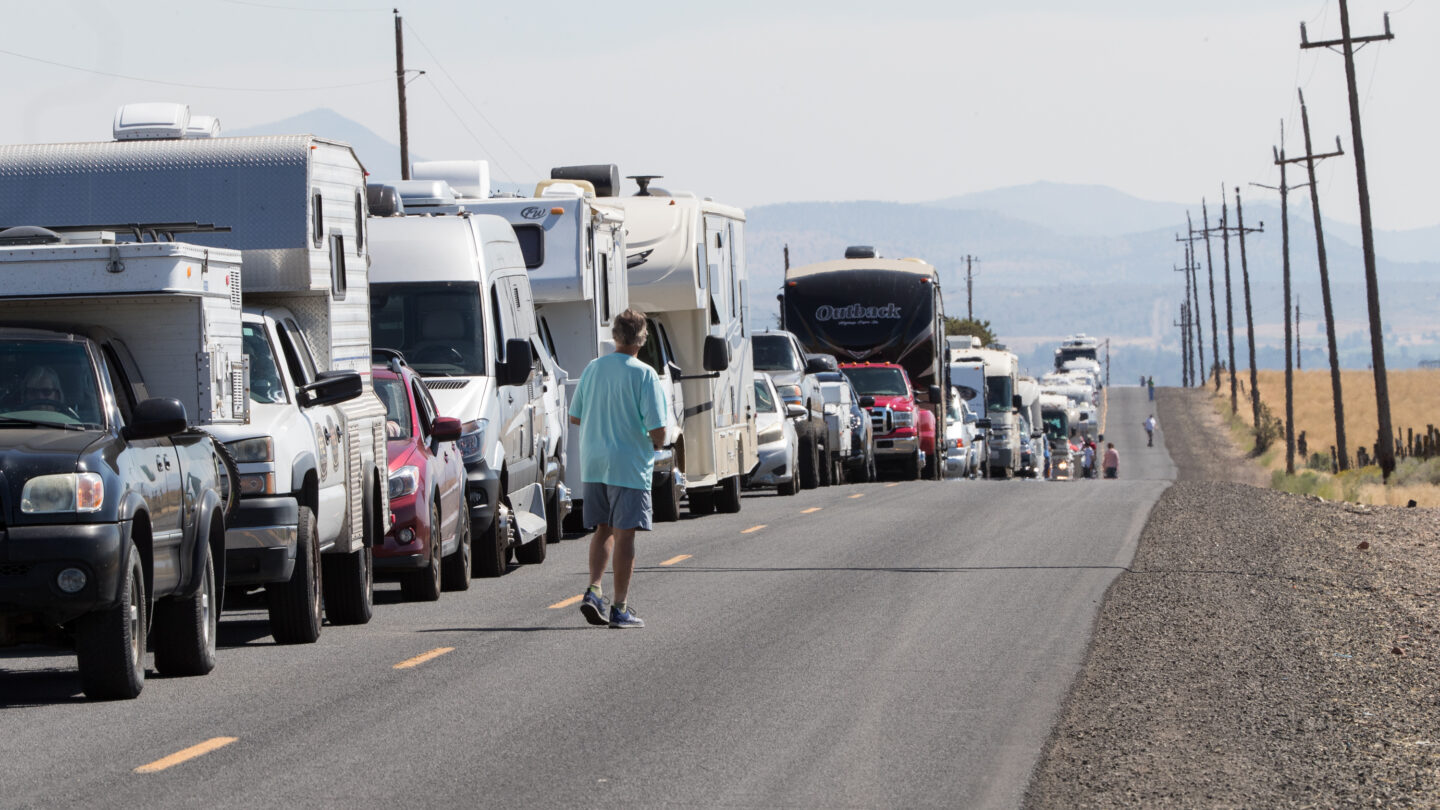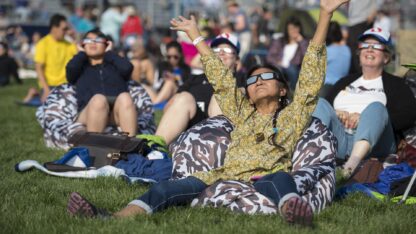NASA says that roughly 31.6 million people live in the path of this year’s total solar eclipse, and a little under half of the U.S. population lives within 200 miles driving distance of the path of totality.
That could mean many millions of Americans will hit the road to get a better view on April 8. If you’re still pondering whether or not you want to make the journey, here’s what to consider.
Have some destinations in mind, and check the weather and cloud cover forecasts in advance
It’s a good idea to scout out one or more locations within driving distance, so that you have some flexibility if traffic or weather is threatening your plans, says Jonathan Upchurch, a professor emeritus of civil engineering at Arizona State University who has studied travel around solar eclipses.
There are several interactive tools that show the path of totality, including Eclipse2024.org and the National Solar Observatory. You can use them to figure out what sites might work best for you.
In terms of weather, check not just the weather forecast, but also the cloud cover forecast. Some websites, such as Windy.com will predict cloud cover ahead of time, giving you a sense of whether you’ll actually be able to see the eclipse in all its glory.
During the total solar eclipse in 2017, Upchurch says he chose to go to Idaho “because there were some great chances of having sunny skies, and I had the opportunity to be nimble and relocate if I wanted to.”
Before driving into the path of totality, make sure your gas tank is full and that you’ve got everything you need
During the last total solar eclipse in 2017, it’s estimated some 5 million people took to the roads, and those numbers will potentially be much higher this year.
Given all that, Upchurch says it’s important to make sure you’re taking what you need into the path of totality. You should make sure your car is gassed or charged up, and that you have plenty of snacks and water with you in case you get stranded for a while, especially when trying to leave.
Also don’t forget to bring eclipse glasses, which must be worn anytime you’re looking at the sun, except for the few minutes when it is completely blocked by the moon.
Some state emergency planners also recommend bringing a paper map or road atlas in case cellular networks become overloaded with visitors seeking directions from their phones.
Arrive early and stay late
Once you figure out where you’re going to watch the eclipse, and you’ve got your supplies, try to get there early. Although traffic is likely to be heavier than normal on the morning of eclipse day, it still should be possible to reach many destinations without too much hassle, says Upchurch.
“Leaving is definitely going to be more of a problem,” he says. As the eclipse concludes, people will take to the roads all at once to try and get home as fast as they can. In 2017, that led to traffic jams that lasted many hours in some areas. If possible, Upchurch says, people should stay put for a while to try and avoid the worst of the post-eclipse rush, which in 2017 stretched even into the following day in some parts of the country.
And one more thing: If you do find yourself on the move near the time of the eclipse, state officials stress that you should not simply pull over to the side of the road or highway you’re driving on. It’s important to be parked legally and safely at the moment of totality.
If you’re already in the path of totality: Relax and enjoy!
Several major metropolitan areas including Dallas, Indianapolis, Cleveland and Buffalo are already inside the path of totality, so there’s no need to seek a better view, Upchurch says. You’ll probably have the most fun simply staying where you are.
If you’re on the edge of the path of totality, however, you might consider making a short trip to get closer to the center of the eclipse’s path.
“If you’re within about 40 miles of the center line, you’ll have two-and-a-half minutes or more” of complete totality, Upchurch says. It’s up to you to decide whether it’s worth making the trip to a more central location.
Despite studying the potential hassles of traveling extensively, Upchurch says he’s still looking forward to seeing the 2024 eclipse, which he plans to watch from Texas.
“Totality is absolutely spectacular,” he says. “If you have a chance to witness it, I would do it.”
Copyright 2024 NPR. To see more, visit https://www.npr.org.
9(MDAxODM0MDY4MDEyMTY4NDA3MzI3YjkzMw004))

9(MDAxODM0MDY4MDEyMTY4NDA3MzI3YjkzMw004))









